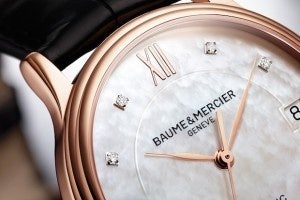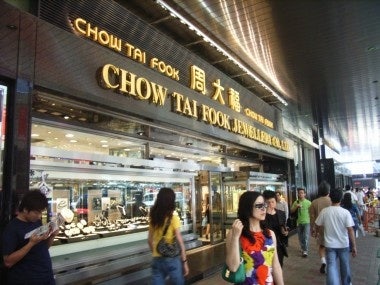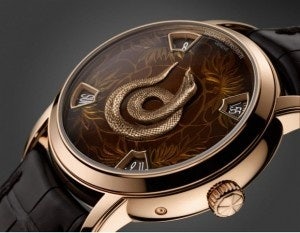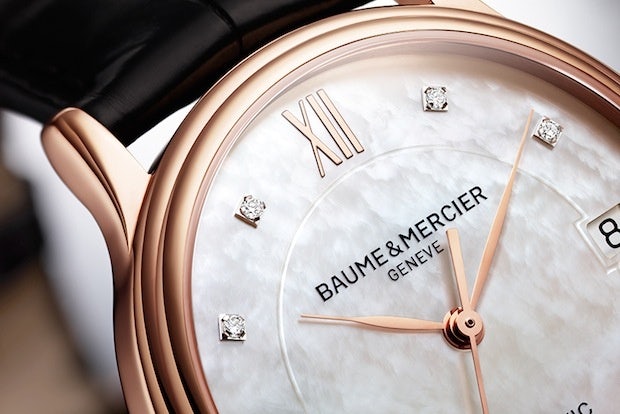Tastes Changing, But Millions Saving Up For First Luxury Watch#

This weekend, the news site Le Temps reported that the Swiss luxury group Richemont, owner of leading brands such as Cartier, Van Cleef & Arpels, and Piaget, has signed an agreement with the Hong Kong-based jeweler Chow Tai Fook to create a joint venture aimed at distributing Baume & Mercier watches in mainland China. According to Le Temps, the 50/50 JV has a dual purpose: to accelerate the development of Chow Tai Fook's growing watch business, and to more effectively promote Baume & Mercier in the Mainland market.
With well over 1,000 outlets in mainland China and more than 1,700 in the Greater China region, Chow Tai Fook certainly has the reach to expose more Chinese consumers to the lesser-known Baume & Mercier. Currently, Chow Tai Fook distributes other Swiss watch brands such as Piaget, Jaeger-LeCoultre, Cartier, Blancpain, Corum, and Girard-Perreagux, and this year the jeweler will reportedly spend around HK$1 billion (US$129 million) to expand its network and help it better compete with rivals like Tiffany as well as other Hong Kong jewelry retailers like Chow Sang Sang and Luk Fook.

While Chow Tai Fook seems to view this deal as another credibility-booster for its watch-selling business, for Richemont it's clear that something must be done to spur sales in a changing China market. As Bloomberg notes this week, the Swiss luxury giant recorded disappointing earnings in the third quarter of 2012, hit by lackluster demand within mainland China and the changing tastes of China's luxury watch buyers.
As Jing Daily pointed out this past fall, in the third quarter of 2012 many wealthy Chinese consumers either took a wait-and-see approach to luxury purchases close to home, or did their luxury shopping overseas as scrutiny of government officials' purchases increased and luxury gift-givers held back. However, demand was clearly there at the end of the year, as retail sales in Hong Kong jumped 9.5 percent in November following two months of decline. Jewelry, watches and other valuables, Reuters reported, increased nearly 14 percent that month in Hong Kong as buyer confidence returned.
Richemont's rising exposure to the China market in particular has perhaps hurt the group in the very short-term. (This week's results reflect the lowest point for mainland China's luxury market in years.) However, over the medium- to long-term, Richemont's China expansion effort will likely pay off as consumers "graduate" to new brands and look for new features. Changing tastes in the watch market, in terms of functions rather than simply brand names, is an important sales driver that is often overlooked by analysts and watchmakers alike. Via Bloomberg (emphasis ours):
Sales of Cartier timepieces probably declined as Asian buyers switch to models that don’t use batteries and cost more to make, said John Guy, an analyst at Berenberg Bank.
“Cartier watches is an area of underperformance,” he said by phone. “
Asian buyers’ tastes are changing, and they need to invest more in the automatic, manual-winding segment
.”
Revenue from the company’s jewelry unit, which includes Cartier, slowed to 8 percent in the third quarter from 20 percent in the first half. The gross margin of a stainless steel quartz Cartier watch, which uses a battery, is 80 percent, compared with about 65 percent for a gold, automatically winding watch from the same brand, he estimates.

Though government officials will likely keep their luxury watch obsessions private this year, China still has millions of potential first-time luxury watch buyers, many if not most of whom don't need to worry about the prying eyes of Weibo users. As such, watchmakers should have every reason to expect better (albeit still comparatively modest) sales in the second half of this year. In the months ahead, keep an eye not only which brands are selling to Chinese buyers -- whether in Greater China, the US, or Europe -- but which types of watches.
Based on our own observations, made during a recent trip to a luxury watch boutique in New York, interest among mainland Chinese male buyers appears to have indeed turned more to automatic (over quartz) movements, diving watches, price points between US$2,000-10,000, lower-key designs without diamonds or other precious stones, leather straps, and, of course, names that are less well-known in the Mainland. While it is, of course, impossible to say whether this group of buyers was representative of China's entire male buyer base, these changing tides (and rising consumer education levels) could be very good for Richemont brands such as Baume & Mercier, which sit in the right price point and are largely understated.
While changing tastes have the potential to dent sales of, say, Cartier quartz collections in China this year, Richemont likely need not worry too much, as the same buyer who had his eyes on that battery-powered Cartier Tank a couple of years ago may have every intention of trading up to a top-of-the-line automatic Officine Panerai or IWC. At the same time, millions of aspirational consumers are waiting in the wings, saving up for months with their eyes on that very same quartz Cartier. So while it would be foolish to expect a sales boom this year, it would also be foolish to expect wealthy Chinese to stop buying their beloved timepieces altogether.
